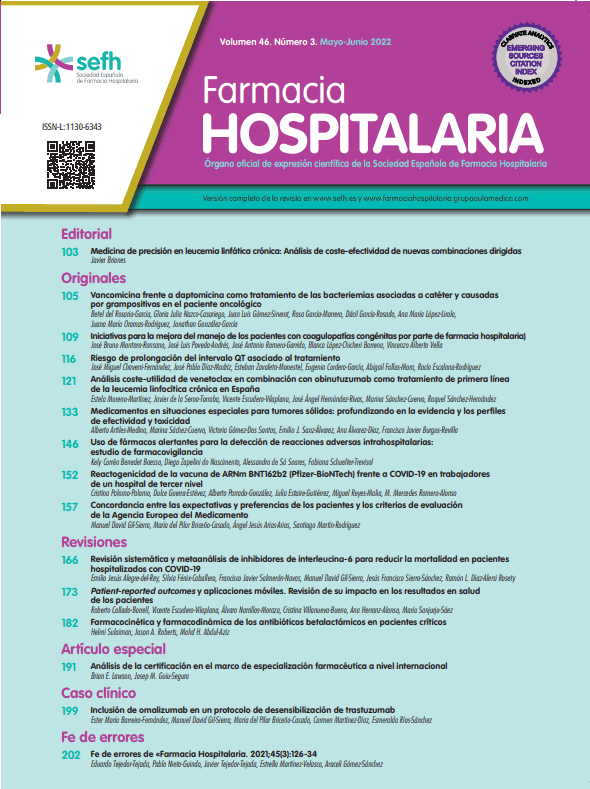To evaluate the effectiveness and safety of 2% diltiazem ointment in the treatment of anal fissure. To analyse the relationship between healing and diagnosis, and duration of the treatment, and the number of applications.
MethodsA prospective observational study of all patients diagnosed with anal fissure that began treatment with topical diltiazem between January and June in 2007. Diltiazem ointment was prepared in the Pharmacy Service. Effectiveness and safety were assessed by a telephone survey conducted with each patient after 8 weeks of treatment, adding it to the patient's clinical records. The variables that were analysed were healing, adverse effects, diagnosis, duration of treatment, and number of applications, among others. Follow-up was carried out for up to 1 year until complete healing of the fissure. The data analysis was carried out by descriptive statistics, crosstabs, and x2.
ResultsA total of 70 patients were included in the study and anal fissure healed in 48.6% of them. Healing occurred in 54.5% of patients with anal fissure and in 33.3% of patients with anal fissure and haemorrhoids. Some adverse effects occurred in 30% of patients. Therapy was abandoned due to adverse reactions for 5.7%. The fissure was cured for 60% of patients who underwent treatment for a month or more. More than twice-daily applications did not lead to improved healing. There were no significant statistical differences in these results.
ConclusionsDespite not having found statistical differences between the analysed variables, treatment of anal fissures with 2% diltiazem ointment has avoided surgery in nearly 50% of patients, with few adverse effects.
Evaluar la efectividad y la seguridad de la pomada de diltiazem al 2% en el tratamiento de la fisura anal. Analizar la relación entre la cicatrización de la fisura y diagnóstico, duración del tratamiento y número de aplicaciones.
MétodosEstudio prospectivo observacional de todos los pacientes diagnosticados de fisura anal que comenzaron tratamiento con diltiazem tópico entre enero y junio de 2007. La pomada de diltiazem al 2% se preparó como fórmula magistral en el servicio de farmacia. La efectividad y la seguridad se evaluó mediante encuesta telefónica a cada paciente tras 8 semanas de tratamiento, completándose con la historia clínica del paciente. Las variables analizadas fueron cicatrización, efectos adversos, diagnóstico, duración del tratamiento y número de aplicaciones, entre otras. Se realizó seguimiento hasta resolución de la fisura hasta un período de 1 año. El análisis de los datos se realizó mediante estadística descriptiva y frecuencia, tablas de contingencia y x2.
ResultadosSe incluyó a un total de 70 pacientes y se produjo cicatrización en el 48,6% de éstos. Cicatrizó en el 54,5% de los pacientes con fisura anal y en el 33,3% con fisura anal y hemorroides. El 30% experimentó efectos adversos. El 5,7% abandonó el tratamiento por reacción adversa. La fisura cicatrizó en el 60% de los pacientes que estuvieron más de 1 mes en tratamiento. No hubo más cicatrización con más de 2 aplicaciones diarias. En ninguno de estos resultados hubo diferencias estadísticamente significativas.
ConclusionesA pesar de no encontrarse diferencias significativas entre las variables estudiadas, el tratamiento de la fisura anal con la pomada de diltiazem al 2% ha evitado la intervención quirúrgica casi en un 50% de los pacientes, con efectos adversos poco frecuentes.






